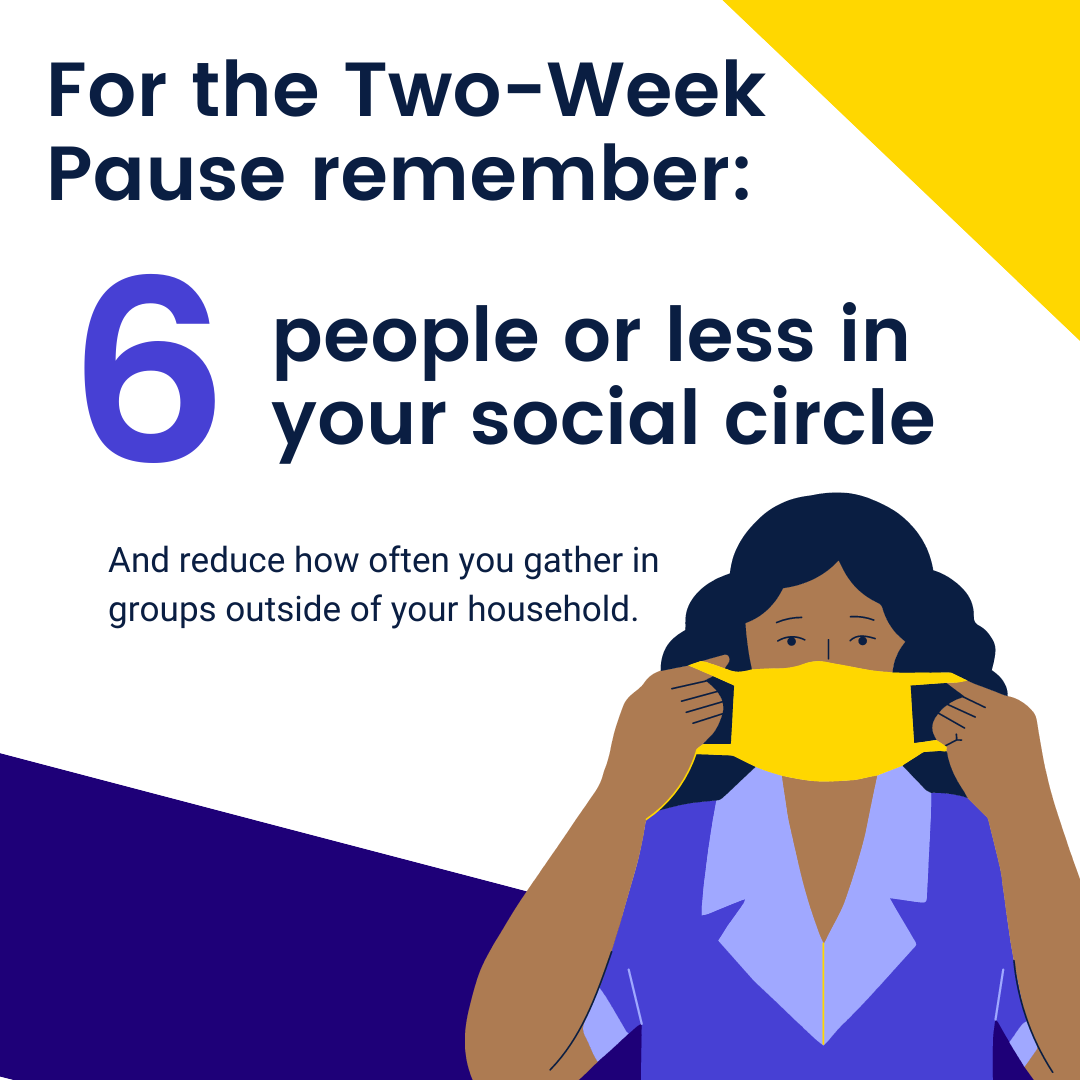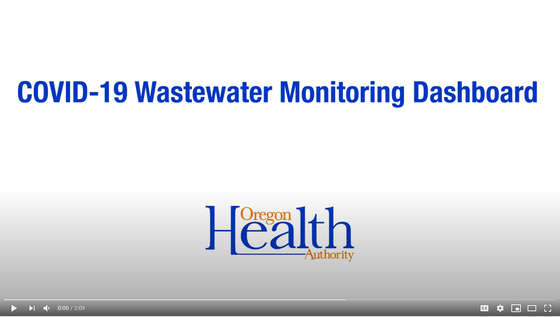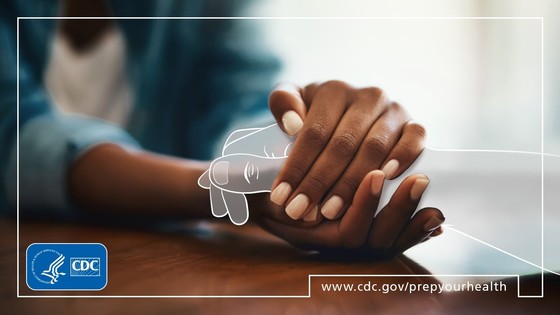Nov. 12, 2020

Today’s total number of new confirmed and presumptive COVID-19 cases – 1,122 – is the highest number of cases reported in a single day since the pandemic started in Oregon. Small social gatherings continue to act as a catalyst for COVID-19 transmission: For example, a portion of this week’s rising cases can be attributed to at least five Halloween events, from small social gatherings to a party attended by more than 100 people. (Today’s new cases are under investigation and cannot be attributed yet to a source.)
The Oregon Health Authority (OHA) urges you to:
- Limit social gatherings to your household, or no more than six people if the gathering includes those from outside your household.
- Reduce the frequency of those social gatherings (the majority of Oregonians are now socializing three times or fewer every two weeks).
- Keep the same six people in your social gathering circle.
While these social gathering precautions are in place for the nine counties covered by Governor Brown’s “pause” declaration, they are effective COVID-19 prevention steps for all Oregonians.
 
OHA looks at many kinds of data to track and monitor COVID-19 in the state. We now have a wastewater monitoring dashboard available to help us understand where COVID-19 may be spreading in Oregon.
OHA is working with Oregon State University to collect and test samples of wastewater, or sewage, for traces of the virus that causes COVID-19, called SARS-CoV-2. Samples are being collected from wastewater treatment facilities in small- to medium-sized communities around the state.
The monitoring serves as an “early warning” system to tell us if COVID-19 is spreading silently in communities. It is meant to help public officials try to prevent potential outbreaks or, if necessary, move resources to a community. OHA launched the project in the early fall with funding from the Centers for Disease Control and Prevention (CDC). .
A new video is available to explain the wastewater monitoring dashboard is available at this link.
 
Strong emotions like fear, sadness, or other symptoms of depression are normal, as long as they are temporary and don’t interfere with daily activities. If these emotions last too long or cause other problems, it’s a different story.
Sometimes stress can be good. It can help you develop skills needed to manage potentially threatening situations. Stress can be harmful, however, when it is prolonged or severe enough to make you feel overwhelmed and out of control.
Physical or emotional tension are often signs of stress. They can be reactions to a situation that cause you to feel threatened or anxious. Stress can be related to positive events (such as planning your wedding) or negative events (such as dealing with the effects of a natural disaster).
The Centers for Disease Control and Prevention (CDC) offer tips for self-care.
Safe + Strong also has resources and information on coping with stress.
 
Oregon OSHA has adopted a temporary rule that combats the spread of coronavirus in all workplaces by requiring employers to carry out a comprehensive set of risk-reducing measures. The rule will take effect Nov. 16, with certain parts phased in, and is expected to remain in effect until May 4, 2021.
The COVID-19 Hazards Poster is now available in both English and Spanish. Read the news release for more details.

The Oregon Health Authority released its COVID-19 Weekly Report today, which showed that during the week of Nov. 2-8, OHA recorded 5,177 new cases of COVID-19 infection — up 46% from last week’s tally of 3,542. This is the third consecutive week that daily case counts set a record high for the pandemic.
The number of newly tested Oregonians rose to 34,307, and the percentage of positive tests rose sharply to 11.9%.
Forty-two Oregonians were reported to have died in association with COVID-19, compared to 37 the previous week; 212 were hospitalized.
People aged 20 to 49 accounted for the largest percentage of infection at 55%, despite accounting for 39% of the total population. People younger than 30 accounted for 37% of the cases.
People over 80 accounted for 51% of COVID-19 associated deaths, and people over 70 accounted for 74% of deaths associated with the illness.

COVID-19 has claimed four more lives in Oregon, raising the state’s death toll to 746, OHA reported at 12:01 a.m. today.
OHA reported 1,122 new confirmed and presumptive cases of COVID-19 as of 12:01 a.m. today bringing the state total to 53,779.
The new confirmed and presumptive COVID-19 cases reported today are in the following counties: Baker (1), Benton (20), Clackamas (102), Clatsop (1), Columbia (8), Crook (5), Curry (3), Deschutes (28), Douglas (14), Grant (4), Harney (1), Hood River (3), Jackson (123), Jefferson (1), Josephine (4), Klamath (9), Lane (65), Lincoln (1), Linn (8), Marion (102), Morrow (3), Multnomah (351), Polk (19), Umatilla (44), Union (2), Wasco (5), Washington (169), and Yamhill (26).
Oregon’s 743rd COVID-19 death is a 62-year-old man in Lane County who tested positive on Oct. 13 and died on Nov. 11 at PeaceHealth Sacred Heart Medical Center Riverbend. He did not have underlying conditions.
Oregon’s 744th COVID-19 death is a 93-year-old man in Clackamas County who tested positive on Nov. 4 and died on Nov. 5. Place of death is being confirmed. He had underlying conditions.
Oregon’s 745th COVID-19 death is a 95-year-old man in Marion County who tested positive on Oct. 14 and died on Nov. 11 in his residence. He had underlying conditions.
Oregon’s 746th COVID-19 death is a 35-year-old man in Multnomah County who tested positive on Nov. 5 and died on Nov. 9 in his residence. Presence of underlying conditions is being confirmed.
 Did someone forward this to you? You can subscribe here.
|